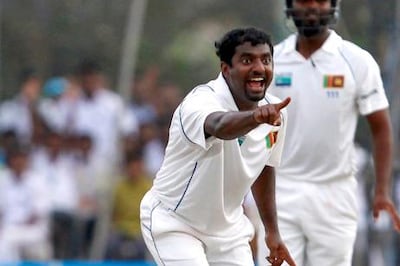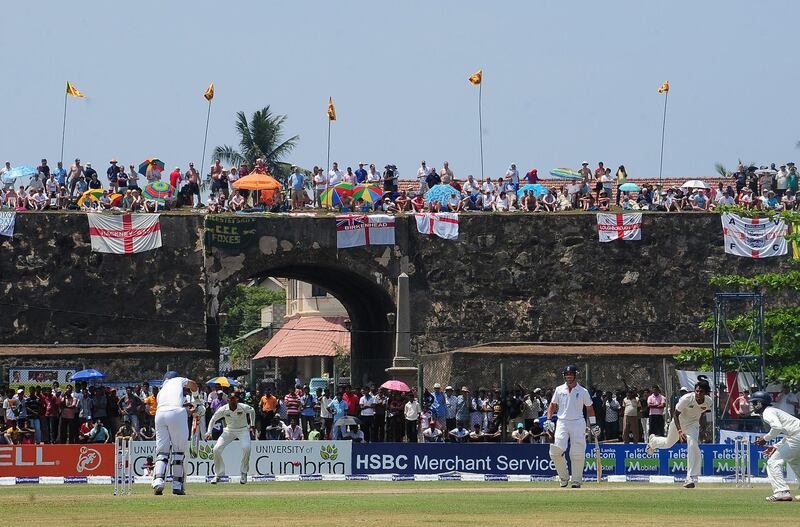England could be the last team to take on Sri Lanka at its famed Galle International Stadium, considered one of the world's most picturesque cricket grounds, when they tour in November.
This is because the stadium with views of the sparkling blue Indian Ocean could be demolished because its pavilion stand violates heritage laws protecting a 17th century Dutch fort, according to the government.
Cultural affairs minister Wijeyadasa Rajapakshe told parliament on Friday that the fort risks losing Unesco World Heritage status because of unauthorised construction, including Galle's 500-seat pavilion.
"We have to decide if we want to remain in the World Heritage list or keep the pavilion," Rajapakshe said.
The Galle stadium in the south of the island is hallowed among cricket fans the world over because of its stunning setting and because it is here that the Sri Lankan team are often at their most formidable.
The hosts have won a majority of matches played there since 1998, with the strong winds favouring their wily spinners.
The world's highest Test wicket taker, Sri Lanka's spin wizard Muttiah Muralitharan, took his 800th wicket against India at Galle in 2010. Six years earlier, Australia's Shane Warne took his 500th Test wicket there.
The first Test at the venue was in June 1998 and Sri Lanka won that match against New Zealand by an innings and 16 runs.
Last week, Sri Lanka won their first Test against South Africa in Galle by 278 runs with two days to spare, with the Proteas all out for a record low 73 in the second innings.
The Galle pavilion was built in 2008, four years after the grounds were devastated by the Indian Ocean tsunami which killed at least 31,000 people in the country.
______________
Read more:
[ South Africa spinner Keshav Maharaj pegs Sri Lanka back to keep South Africa in the hunt ]
[ Brace for yet more spin, Sri Lankans warn South Africa ahead of second Test in Colombo ]
Sri Lanka Cricket seeks 'clear rules' on ball tampering after Dinesh Chandimal is punished
Chitrabhanu Kadalayil: Former England star Ian Botham's joy as children play ball near Galle
______________

No bulldozers for now
The fort was begun by the Portuguese, who colonised the island in 1505. However many of the buildings at the site were built by the Dutch, who drove out the Portuguese in 1640.
The British captured Galle in 1796, but did not make any significant alterations to the structures in the walled city. It is now a key tourist attraction.
Sri Lanka's sports minister Faiszer Musthapha said on Friday there will be no immediate demolition.
"We want to maintain the World Heritage status for the fort. We will work out an alternative" for the cricket stadium, he added.
Southern development minister Sagala Ratnayaka noted that Unesco did not object to the cricket grounds, but wanted unauthorised structures around it removed, including the two-storey pavilion.
The building, named after former president Mahinda Rajapakse, obstructs the view of the fort from the main Galle road.
Sri Lanka's 1996 World Cup-winning captain Arjuna Ranatunga suggested on Friday that the authorities could dismantle the offending pavilion and erect temporary stands when Tests were being played.
"We need to keep both the heritage status for the fort and at the same time play international matches at Galle," Ranatunga, now a minister in the current government, told AFP.
He said a proposal 10 years ago to play day and night matches at Galle - floated while he was the interim head of Sri Lanka Cricket - was shelved because setting up lights would have violated building codes in the area.
His cabinet colleague Rajapkshe noted that the government plans to build another stadium in Galle, two hours' drive south of Colombo. "We could have another cricket grounds in Galle soon," he added.





